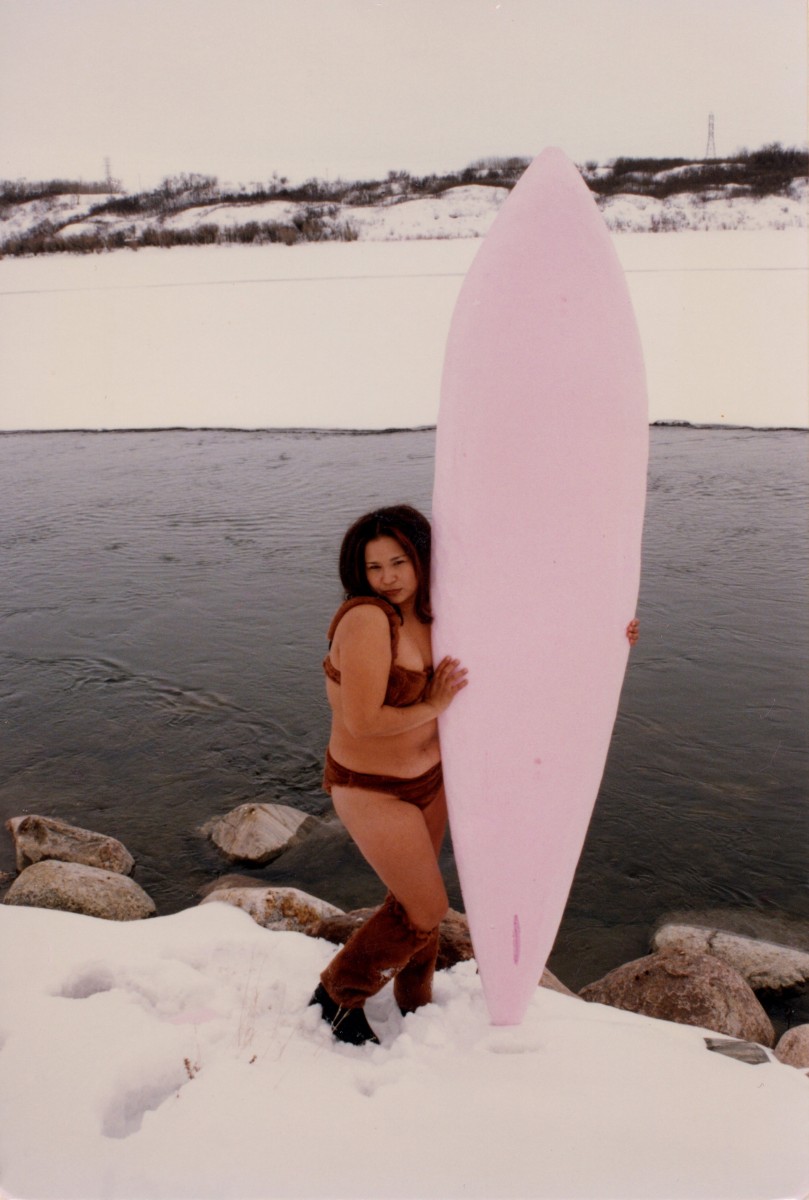The edge of Indigenous Art
The AGO’s curator of Indigenous Art, and founder of aabaakwad, shares her experience of The Sydney Biennial amidst a pandemic.
The theme of this year’s Sydney Biennale of Art is Nirin, a word from the Wiradjuri language that means “edge". And though it was cut short due to obvious health concerns, the Biennale was still opened with aabaakwad - an international gathering of Indigenous artists, curators and thinkers, founded by the AGO’s curator of Indigenous Art, Wanda Nanibush. Below, she shares her experience of the importance of art amidst crisis.
By Wanda Nanibush, AGO’s curator of Indigenous Art
When I boarded the plane on March 5 bound for Sydney, Australia to run a global gathering of International Indigenous artists, curators and thinkers I had no idea how much the global community would shift by the time aabaakwad opened.
Brook Andrews, the Artistic Director of the Biennial of Sydney and myself, the founder of aabaakwad and curator of Indigenous Art at the AGO, met over a year ago in Sapmi (territory of the Sami) in northern Norway. We stayed together again in Venice for the Bienniale and, out of these two radically different spaces for global Indigenous art, aabaakwad 2020 NIRIN was born. The premise was to take aabaakwad out of Toronto, to Sydney, to open the first Indigenous-led biennial. The desire to include artists that were already circulating globally as well as artists working in remote communities led to this marriage of events. When the World Health Organization finally announced we were in a global pandemic, many aabaakwad artists were still in the air. They landed and we headed straight to the opening night at the Opera House. We were greeted with a Welcome to Country ceremony followed by a night of diverse programming from song and dance, to performance art. It was amazing to see the way the pandemic brought everyone together in solidarity. Each day there was new information and more countries calling people home. Speakers were incredibly generous and flexible, and the audience was there until the end. I thought to myself, how fitting it was that we were sitting in a room at the Museum of Contemporary Art Australia, Sydney listening to artists whose work is relevant to the global crisis we face when the world itself was slowly shutting down.
Everyone made it home and I could feel the earth breathe as planes became grounded.
To help give you a taste of how this event has reshaped our understanding of Indigenous Art, we’ve gathered a few aabaakwad-related stories.
ABC Radio National, Australia – What is aabaakwad? A conversation between aabaakwad artist Ursula Johnson and Wanda Nanibush on Awaye!
Art Newspaper - Sydney Biennale puts climate emergency and Indigenous struggle front and centre
The Financial Review - Why this Sydney Biennale is the edgiest yet
The Guardian - Sydney Biennale 2020: First Nations art upends Eurocentrism in powerful, occasionally confounding show
The Guardian - ‘Meth Kelly’ and colonial monsters: Australia's biggest art shows get Indigenous rewrite
10 Broadsheet - Five Picks: What to See and Do at the 2020 Biennale of Sydney
Inuit Art Quarterly - aabaakwad 2020 NIRIN to Launch the Sydney Biennale
Ocula Magazine - Biennale of Sydney to Tackle Race and Colonialism
Looking for more art news from the AGO and beyond? Stay tuned to the AGOinsider.
Sponsored by
Sponsored by
Presented in partnership with the Canada Council for the Arts.
Presented in partnership with the Canada Council for the Arts.
ABOUT CANADA COUNCIL FOR THE ARTS
The Canada Council for the Arts is Canada’s public arts funder, with a mandate to foster and promote the study and enjoyment of, and the production of works in, the arts. The Council champions and invests in artistic excellence through a broad range of grants, services, prizes and payments to professional Canadian artists and arts organizations. Its work ensures that excellent, vibrant and diverse art and literature engages Canadians, enriches their communities and reaches markets around the world. The Council also raises public awareness and appreciation of the arts through its communications, research
ABOUT CANADA COUNCIL FOR THE ARTS
The Canada Council for the Arts is Canada’s public arts funder, with a mandate to foster and promote the study and enjoyment of, and the production of works in, the arts. The Council champions and invests in artistic excellence through a broad range of grants, services, prizes and payments to professional Canadian artists and arts organizations. Its work ensures that excellent, vibrant and diverse art and literature engages Canadians, enriches their communities and reaches markets around the world. The Council also raises public awareness and appreciation of the arts through its communications, research


